
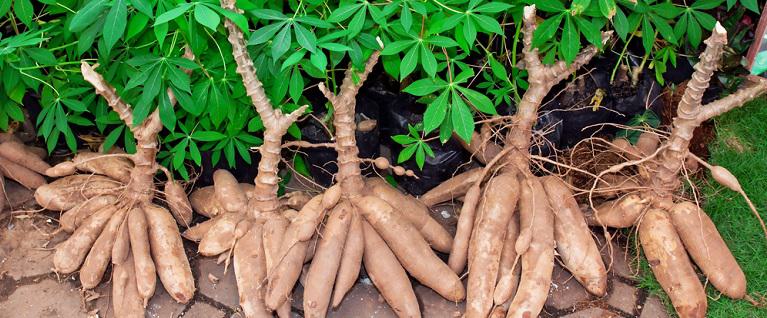
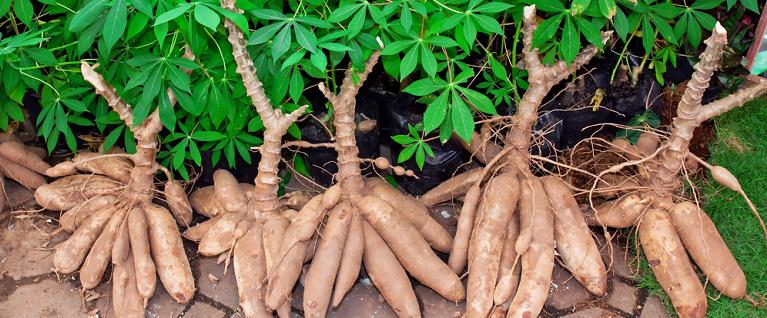
If you're new to cassava flour and haven't done your ingredient homework yet, our Bob's Red Mill Food Experts are here to help you quickly understand how you can begin baking with the superfood ingredient cassava flour. Cassava flour, often referred to as yuca, is not to be confused with the popular houseplant. Instead, cassava is a root vegetable local to South America and a staple crop in many countries throughout Africa and Asia. Similar in texture to a sweet potato, the cassava plant features long tubers that grow underground. The tubers have a bark-like brown skin with a fibrous white flesh underneath.
Aside from its similar texture, cassava can be eaten in many of the same ways you'd eat potatoes. Plus, it is also gluten free. Boil it, mash it, fry it or roast it. However, the most common way it's consumed is as the flour used in baking recipes.
We touched on what cassava flour is, but it's essential to know where it comes from to truly understand this vegetable. So, what is cassava flour made from? The tubular root of the cassava plant is used to make the popular gluten free flour found in kitchens worldwide. A staple food worldwide for centuries, it's most commonly consumed in Africa, South America and Asia. Though cassava is often referred to as an annual crop, it's a perennial crop--one that doesn't need to be replanted every year. Instead, after harvest, it automatically grows back. The whole tubular root is peeled, pulped, dried and milled into a fine powdery substance to make cassava flour. Not only does this process turn it into an excellent wheat flour substitute, but it also removes the small traces of cyanide found in the vegetable, making it safe for people to consume.
The mild flavor and off-white color of cassava flour make it a favorite in baking recipes like cakes and muffins. Cassava flour also has a slightly lighter texture than regular wheat flour and is more absorbent. While it can be used in wheat flour recipes, the results are best when a cassava-specific recipe is used as the ingredients have already been adjusted to accommodate the slight change in texture. As a paleo flour, cassava flour is free of grains, gluten, soy, nuts, additives and fillers. Therefore, it's the ideal flour for people following a specific diet and to use in nut free, grain free and gluten free baking. 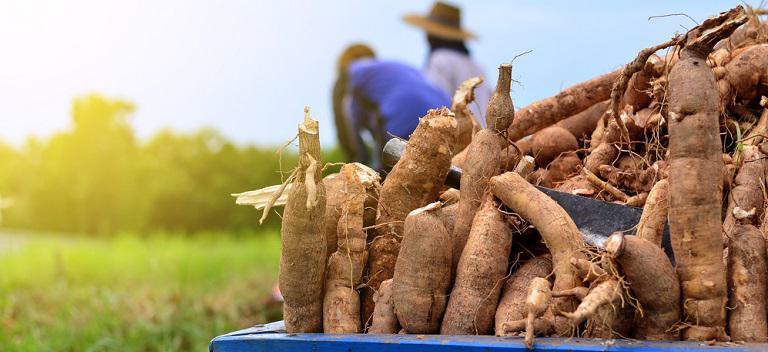
What are the cassava flour nutrition benefits? Aside from being a low-allergen food, cassava flour offers several health benefits. First, it contains a notable amount of vitamins like potassium, vitamin C, calcium, vitamin A, folate, magnesium and iron, all of which contribute to a healthy diet and digestive system. Additionally, this gluten free flour is low in fat, cholesterol and sodium which, while okay in moderation, can be harmful to one's health when eaten in excessive amounts. Lastly, cassava or manioc flour is loaded with resistant starch, meaning that it will help feed the good bacteria in our gut. Foods high in resistant starch have several benefits and have been linked to lower inflammation levels and higher metabolisms.
Though they come from the same plant (the cassava root), cassava flour and tapioca flour are pretty different. Cassava flour is made from the entire cassava root being dried and ground into flour. This being so, it contains all the nutrients that the root would. Tapioca flour/starch is made from the same root. However, it's put through a process of filtering, peeling, pulling and dehydrating until only the starch is left, creating a fine powder. Because tapioca flour is void of nearly everything but a soluble carbohydrate, it lacks essential nutrients and fiber. Additionally, these two flours feature different textures and are used in entirely different ways. Cassava flour, similar to wheat flour, white flour and regular flour, is used in many baking recipes. Tapioca flour resembles corn flour and arrowroot flour and is commonly used as a thickening agent.
Cassava flour has quickly become one of the most popular gluten free flours. However, recreating the texture and taste of wheat flour is not an easy task. Often, multiple flours are required to create gluten free baked goods that taste similar to traditional ones. Nevertheless, cassava flour can often be used to replace wheat flour in many recipes directly and because of this, it's become a go-to when baking gluten free and paleo goods. We don't recommend substituting at a one-to-one ratio when adding cassava flour to a traditional wheat flour recipe. Instead, start with about 3/4 cup cassava flour for every 1 cup of wheat flour and note how your favorite recipe adapts. From there, you can add more as needed. Though cassava flour is slightly more powdery than traditional flour, it is also denser. This makes cassava flour more absorbent and when adjusting wheat flour recipes, more liquid may be required. Though a bit of experimenting may be necessary, the delicious baked gluten free treat will be well worth the effort. 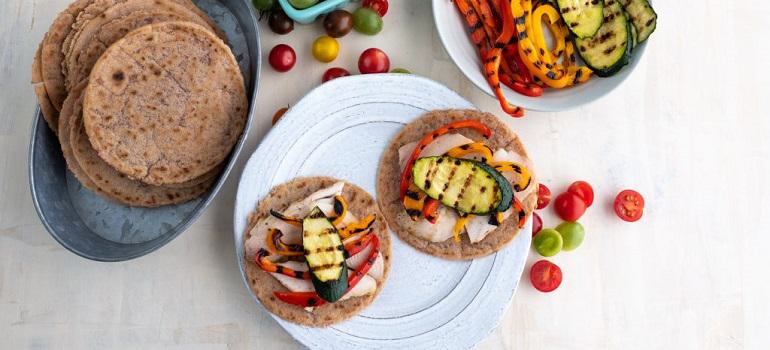
Cassava flour and coconut flour are often compared due to their similar texture. While they may look and feel the same, these flours do not always produce the same result. As a fiber-packed flour, cassava flour tends to soak up high amounts of liquid, similar to coconut flour. And though both flours are great for Paleo and gluten free baking, they have very distinct flavors. Cassava flour has a relatively more neutral and slightly earthy taste, whereas coconut flour is sweeter and nutty. Cassava flour can also brown and produce a crust when it's used in baked goods. While cassava flour can be combined with other gluten free flours, it's often unnecessary. Several recipes use cassava flour as the main ingredient so that you won't need to adjust when following them.
Cassava flour has a shelf life of two years. It should be sealed and stored in a cool, dry place for best results.
As cassava flour has grown in popularity, the list of places where you can find it has also grown. Widely available at most supermarkets, health food stores and online, cassava flour is an in-demand gluten free ingredient. When searching for cassava flour, be sure not to confuse it with tapioca flour, as they are often placed next to each other on grocery store shelves.
As a ground-up root vegetable, cassava flour is entirely gluten, grain and dairy free. An excellent substitute in gluten free baking, it can also be used when making paleo dishes.
Ready to start cooking with cassava flour? Try out one of the recipes below.
Cassava Flatbread
The perfect dinner accompaniment, this Cassava Flatbread is absolutely delicious. Naturally gluten free and made with just a handful of ingredients, it's a recipe that you'll make time and time again. Pair this flatbread with grilled veggies and a warm bowl of soup, or enjoy it plain. It's sure to satisfy your cassava bread cravings, sans grains.
Cassava Potstickers
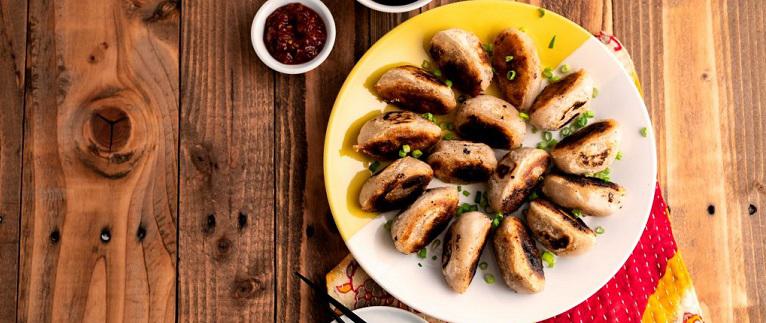 Impress everyone at the dinner table and make these cassava potstickers. While making potstickers may look and sound intimidating, this Cassava Potsticker recipe makes it easy. Made with gluten and grain free cassava flour, they're filled with a mixture of chopped pork, mushrooms, cabbage and vegetables, while tamari and ginger add flavor. A meal worth going back for seconds for, they'll quickly become a family favorite.
Impress everyone at the dinner table and make these cassava potstickers. While making potstickers may look and sound intimidating, this Cassava Potsticker recipe makes it easy. Made with gluten and grain free cassava flour, they're filled with a mixture of chopped pork, mushrooms, cabbage and vegetables, while tamari and ginger add flavor. A meal worth going back for seconds for, they'll quickly become a family favorite.
Now that you know what cassava flour is made of and how you can use it to create gluten free dishes, it's time to head to the kitchen. Draw inspiration from one of the recipes above, or create your own kitchen masterpiece. We're confident that no matter what you cook up, it's sure to taste great. From everyone at Bob's Red Mill, have a healthy and happy day!
Love cooking with cassava flour? We'd love to hear more about the tasty recipes you create with this essential gluten free ingredient. Share your favorite cassava flour dishes with us in the comments below!